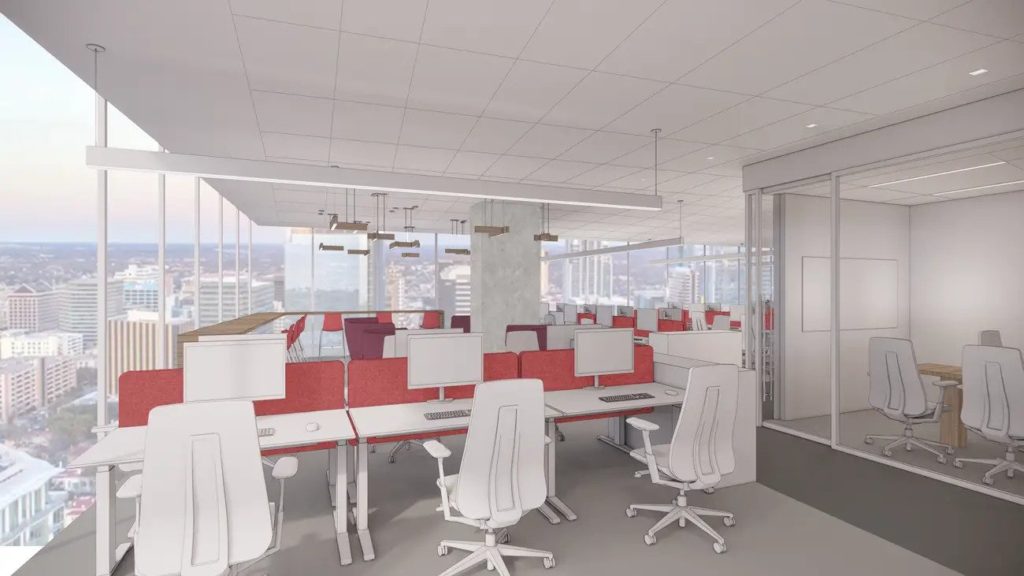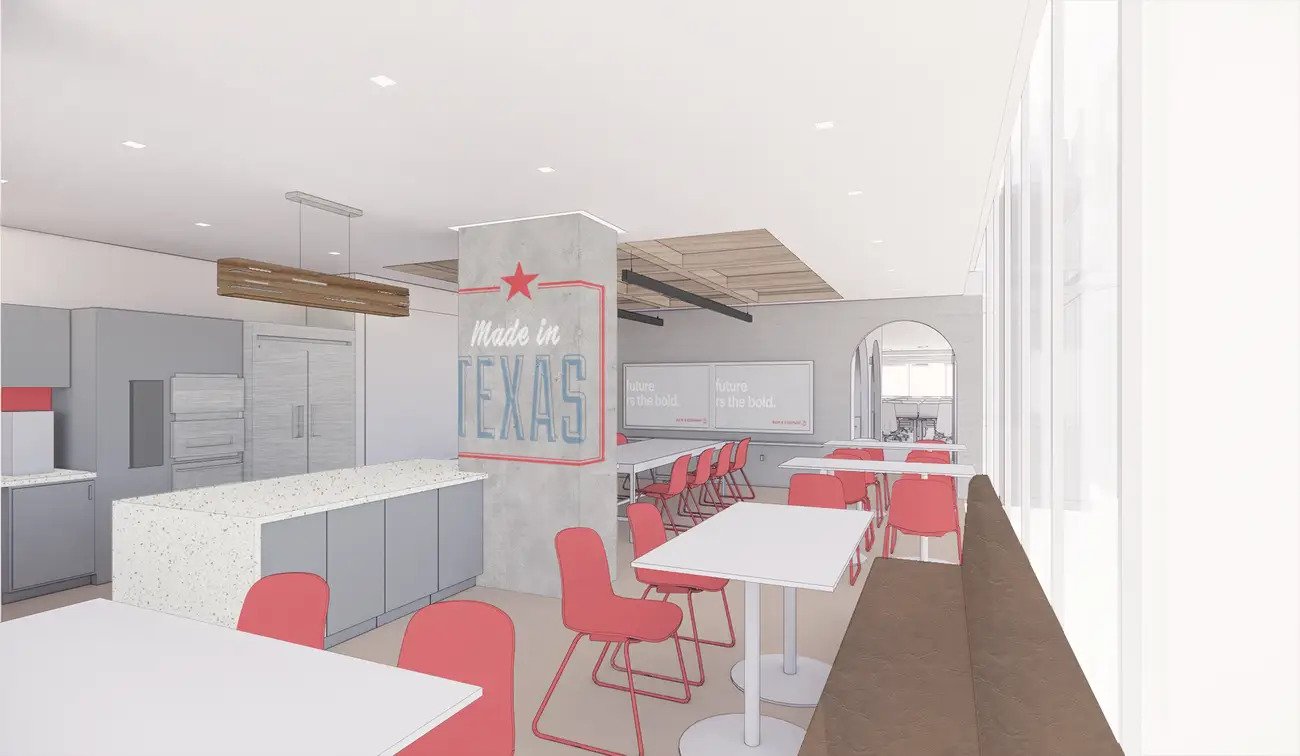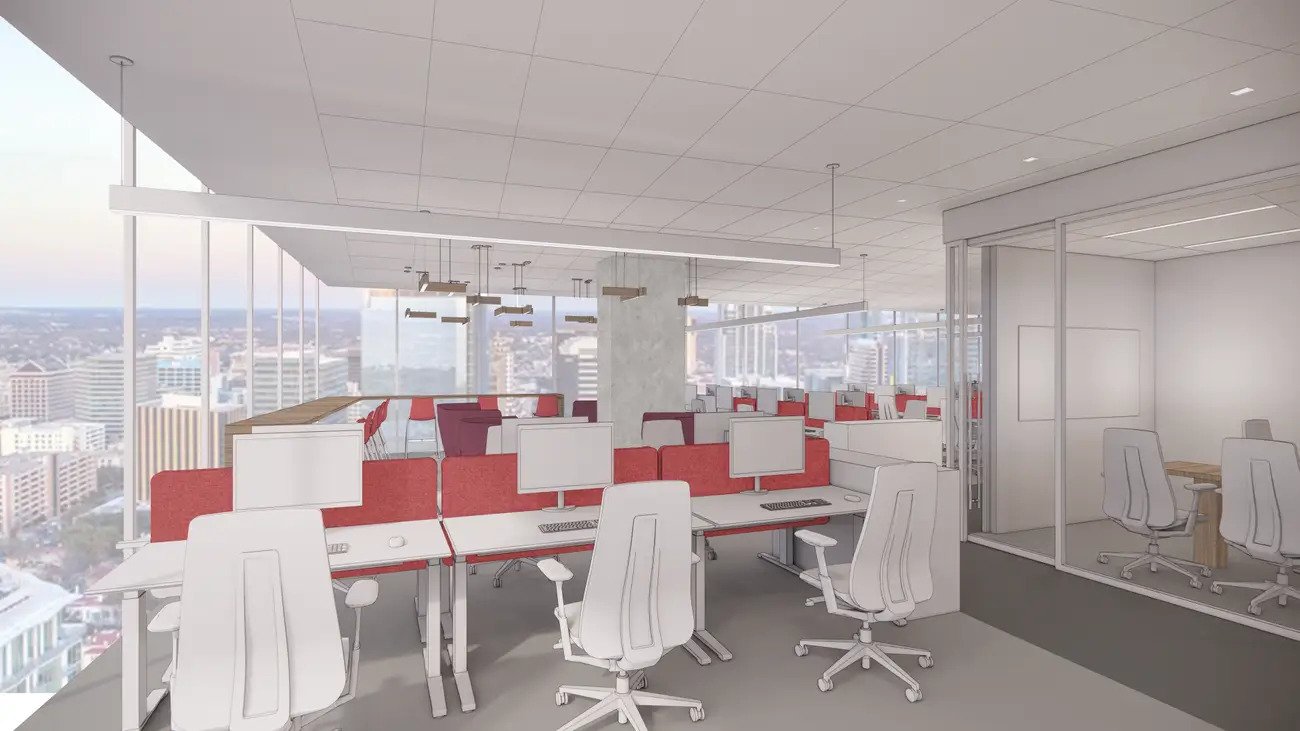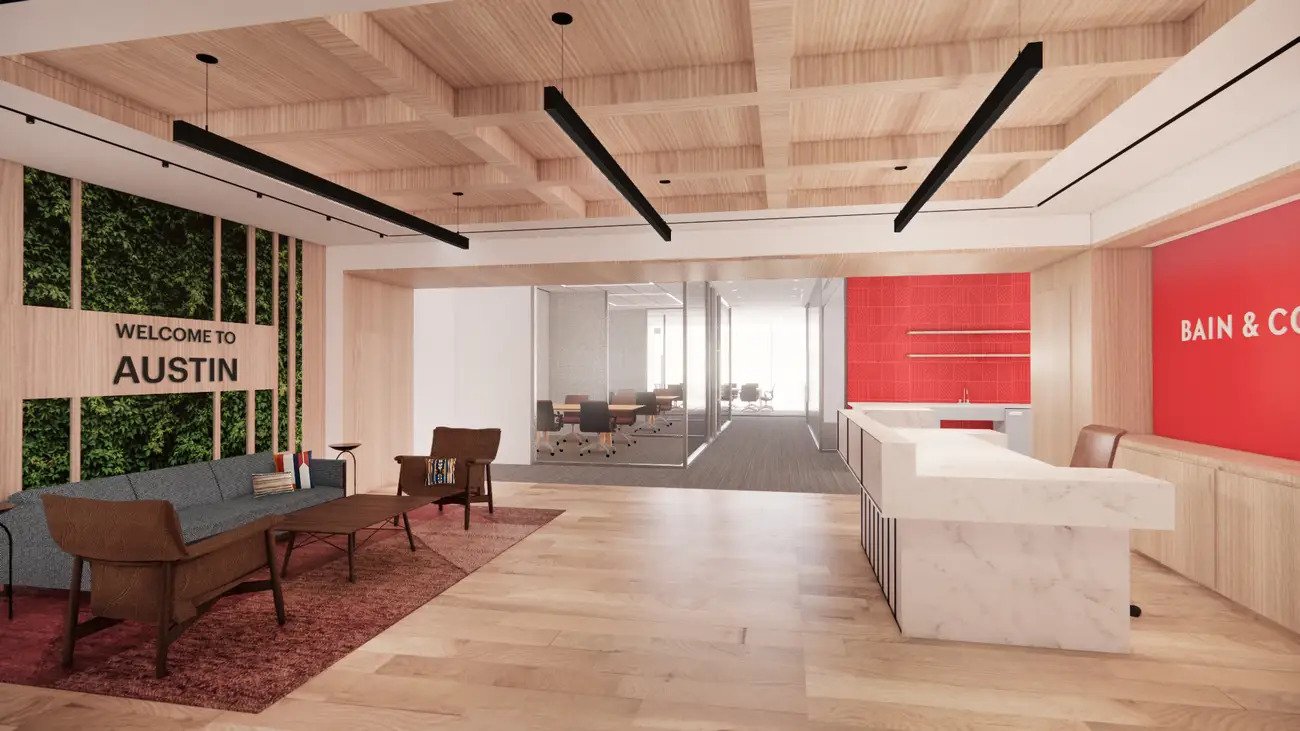- You are here:
- Home »
- Top Story »
- Bain & Co.’s new socially distanced Austin TX office: the first firm that will fully open since the pandemic started
Bain & Co.’s new socially distanced Austin TX office: the first firm that will fully open since the pandemic started

The general layout. Employees can also reserve conference rooms, phone booths, and desks.
24 April 2021 – When Bain & Co. started planning the design for its new office in Austin, Texas, leaders at the firm wanted their employees’ input. It formed a 12-person real-estate committee led by Mackenzie Bushy, an associate partner and diversity, equity, and inclusion leader. Bushy has been showing off the new design in a series of Zoom calls + on-site visits by journalists. She said the group wanted to design a space reflective of the surrounding Austin community. Think country music, vibrant colors, and tacos:
“The vision for the Austin office decided as a group was Willie Nelson eating a taco at the Hotel van Zandt, strumming his guitar, talking about mergers and acquisitions. We got together with the architects every week to hammer out how to execute that vision.”
But designing its first office since the start of the pandemic was not just about selecting the right color palette. The group had to think critically about how they could design a space that both encouraged collaboration and kept people socially distanced. Investing in a new office at a time when many companies are reducing or eliminating office space altogether might seem counterintuitive. But Peter Bowen, a partner and new head of office at Bain Austin, said that an in-person office culture is something the firm believes helps to differentiate it from competitors. It’s a decision many business leaders are facing as concerns rise that the push for more hybrid or remote work will mean companies will lose their strong office cultures. Said Bowen:
“We didn’t want to lose what makes us special, which is the connections we form from long-term mentorships, partnering, and working with people together in an environment. If we lose that, we would lose our strategic differentiator.”
Bain is hoping to open the Austin office to employees later this year. Most staff will be able to adopt a hybrid work model and will not be pressured to come into the office if they have health or safety concerns. Bowen anticipates consultants will still travel to client sites once the pandemic subsides.
Prioritizing employee safety

Bain said junior employees will have a cafeteria and lounge where they can network with coworkers
As part of Bain’s reopening protocol in regional offices, offices are ranked along a safety spectrum of red, orange, yellow, and green. Their ranking determines how safe it is for employees to return to the office, with green being the safest. The office reopening will start by bringing back 10% of staff and increase from there, depending on the number of COVID-19 cases there are in the community.
The Austin office’s reception desk includes a sink and sanitation space for employees to wash their hands before entering the office. The office also supplies personal protective equipment such as face masks, hand sanitizer, and gloves. Hallway directions will be marked on the floor to facilitate social-distancing measures, and Bain is using HVAC air-filtration systems to remove bacteria or viruses. Employees, clients, and visitors will be able to complete health-declaration forms to help ensure they’re healthy and haven’t been exposed to the virus before entering the workspace. Consultants who have recently travelled may be asked to quarantine. Bushy:
“We’re going to wait until everyone feels safe before we allow people and clients in. We hope to go back this fall if everything goes well.”
Desk reservations and more collaboration space

The general layout. Employees can also reserve conference rooms, phone booths, and desks.
The Austin office will have large conference rooms, four-person meeting rooms, phone booths, and movable benches in every room to fit more people while still social distancing. The space is designed to fit both junior and senior employees’ needs. While partners tend to use bigger rooms to collaborate with clients, analysts and first-year consultants want a cafeteria, lounge space, and open areas where they can interact with colleagues.
And every room will be outfitted with whiteboards and equipment for “Zoom” meetings (in fact, all the conferencing apps) and the cameras would be facing the wall so that consultants have neutral video backgrounds for client calls. Bushy noted the ability to have private calls where people can’t hear is very important because confidentially really matters for our clients.
Bain is also adopting a “hot desk” office model (one of the more controversial approached to office life post-COVID) which means consultants can reserve a desk space for a couple of hours or on days they’re coming into the office. The office will have open lockers for employees as well. The aim is to reduce the number of desks and focus more on conference rooms and collaboration spaces.
A new color scheme

Employees and visitors will be able to wash their hands in the reception area before entering the workspace.
Bushy said the firm’s current workspaces typically have a neutral, industrial feel – a blend of red and white work cubicles and open spaces for collaborative work. But consultants are taking a different approach to the Austin office’s aesthetic. Apart from the signature red associated with the firm’s logo, the space will include bright orange furniture, brown leather accents, and a sunset ombré wall. The office is downtown near restaurants and coffee shops, and the interior will allow lots of natural sunlight. The aim? Said Bushy:
“We want it to reflect the city’s spirit and its vibrant community, and that’s why we’re using a mixture of extreme colors while still sticking to Bain’s brand”.
